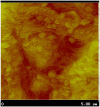Cell culture systems for studies of bone and tooth mineralization
- PMID: 18800815
- PMCID: PMC2653100
- DOI: 10.1021/cr0782473
Cell culture systems for studies of bone and tooth mineralization
Figures





References
-
- McCauley LK. Curr. Opin. Rheumatol. 2001;13:316. - PubMed
-
- Thyagarajan T, Totey S, Danton MJ, Kulkarni AB. Crit. Rev. Oral Biol. Med. 2003;14:154. - PubMed
-
- Kimelman N, Pelled G, Helm GA, Huard J, Schwarz EM, Gazit D. Tissue Eng. 2007;13:1135. - PubMed
-
- Langer R, Vacanti JP. Science. 1993;260:920. - PubMed
-
- Barkana I, Alexopoulou E, Ziv S, Jacob-Hirsch J, Amariglio N, Pitaru S, Vardimon AD, Nemcovsky CE. J. Clin. Periodontol. 2007;34:599. - PubMed
Publication types
MeSH terms
Substances
Grants and funding
LinkOut - more resources
Full Text Sources
Other Literature Sources
Medical

